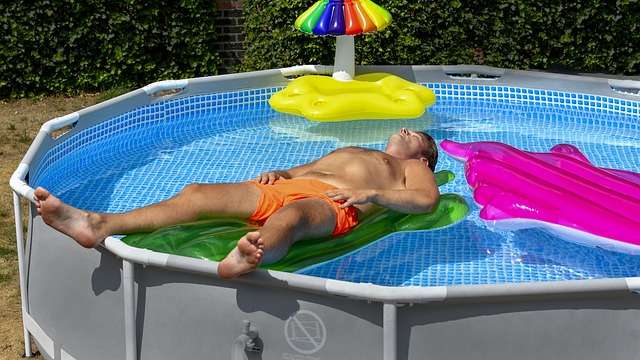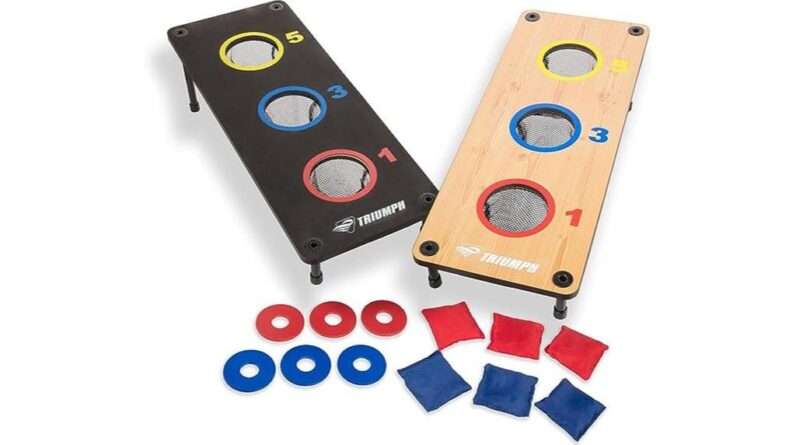
Ever dreamed of transforming your backyard into a summertime oasis with an above ground pool? Picking the right one can be tricky, but we’ve got you covered. It’s not just about size and shape; it’s about understanding your needs, assessing your space, and considering materials that’ll stand up to years of fun. You’re also going to want to keep in mind what kind of maintenance you’re signing up for and how much you’re willing to spend. And remember, longevity isn’t just material deep – location and depth play a part too. Dive into our ultimate guide on choosing the best above ground pool and get ready to make some waves this summer! With all these factors in play, finding the perfect pool might seem daunting but don’t worry – we’re here to help simplify everything for you.
Understanding Your Needs
Before you dive into the pool shopping process, it’s essential to truly grasp what you’re looking for, like a seasoned swimmer gauging the depth before taking the plunge. The question of “how do I choose the right pool?” requires not just answers but also thoughtful contemplation. Start by identifying your needs and wants.
Consider how much space you have available. This is a critical factor in answering “how do I choose an above ground pool location?” Depending on your yard size, certain shapes or sizes may be more suitable than others.
Next comes depth – “what is a good depth for an above ground pool?” For children or less confident swimmers, shallower pools can provide safety and comfort. Yet if you plan to exercise or swim laps frequently, deeper models might serve better.
Materials matter too when asking “what type of above ground pool lasts the longest?” Steel and resin pools tend to offer longevity but each come with their own maintenance requirements. Speaking of which, if ease-of-care concerns you – explore options surrounding “what is the easiest above ground pool to maintain?”
Having identified these crucial aspects, let’s move on to assessing available space and how it affects your choice.
Assessing Available Space
Taking into account the space you’ve got available is pivotal when selecting your ideal outdoor oasis. Before even starting to consider different pool models, take time to carefully measure your yard. You want a location that’s spacious enough not only for the pool itself but also for potential decking and comfortable movement around it.
Here are some factors to keep in mind:
- Evaluate the terrain:
- Flat areas are generally better as they require less work to prepare.
- Steep slopes may require additional costs for leveling.
- Consider sun exposure:
- Pools located in sunny spots heat up faster and need less artificial heating.
- However, consider if you’d prefer a shaded area to escape from intense midday heat.
The size of your chosen location will directly influence which pools are viable options. Every inch counts when dealing with constraints, so precision is crucial. Remember also that local regulations might dictate how close a pool can be to your home or property line.
Ready? Now you’re well-equipped with knowledge about assessing available space, let’s delve into deciding on an appropriate pool size considering your needs and wants.
Deciding on Pool Size
You’ve got your spot picked out, now it’s time to figure out just how big of a pool you can fit in that space. The size of your above ground pool is vital as it directly impacts the amount of water needed, the extent of maintenance required, and overall useability.
Start by measuring the available area. Take into account any obstacles like trees or structures that could affect installation. Remember to factor in extra space for walking around the pool and for any accessories such as ladders or decking.
Next, consider who will be using the pool most often. If it’s primarily for children, a smaller pool may suffice. However, if adults will frequently use it too or if you intend to host pool parties, go for a larger model.
Also consider the depth. Above ground pools typically range from 48″ to 54″ deep which works well for both kids and adults.
Keep in mind that bigger isn’t always better – larger pools require more chemicals, increased filtration time and generally higher maintenance costs.
Now armed with your ideal size specifications, let’s move on towards selecting an appropriate shape that best complements your outdoor space.
Selecting Pool Shape
When it comes to the shape of your pool, there’s more to consider than just aesthetics or personal preference. The shape can influence how you utilize the space and may even impact installation costs.
Primarily, above ground pools come in three shapes: circular, oval, and rectangular. Each has its advantages and serves different purposes:
- Circular pools are great for socializing and family fun. They offer the most swimming area for their size due to their symmetrical design.
- Oval pools lend a more elegant touch to your backyard landscape. They provide extended length for swim laps while still offering room for play.
- Rectangular pools are ideal if you’re looking for a lap swimming setup or have a narrow yard.
Remember to keep in mind that some shapes may require additional support structures which can increase costs as well as installation time.
Now that you’ve considered the implications of pool size and shape on your outdoor space, next up is deciding on what material your pool should be made from. This decision will largely depend on factors such as durability, maintenance requirements, climate conditions, and of course – budget constraints.
Material Considerations
It’s crucial to carefully consider the materials of your potential pool, as this can significantly impact its longevity, maintenance needs, and overall appearance. Broadly speaking, above ground pools come in three main materials: steel, resin, and aluminum.
Steel is the most affordable option but it’s prone to rusting and corrosion over time. It gives a sturdy structure to your pool but may require more frequent upkeep compared to other options. Resin pools are highly resistant to rusting or warping under high temperatures and offer better aesthetic appeal with their smooth finish. They’re slightly pricier than steel ones but often worth the extra investment.
Aluminum pools stand out for their durability and resistance against harsh weather conditions. However, they’re susceptible to pitting – a form of corrosion that leaves small dents on the surface over time. Despite this minor flaw, aluminum pools are well-regarded for their long lifespan if properly maintained.
Consider these material facts when evaluating different pool options. Remember that while initial costs matter, you should also factor in long-term maintenance expenses. The right choice not only fits your current budget but also promises manageable upkeep costs down the line—something we’ll delve into next with ‘budgeting for your pool’.
Budgeting for Your Pool
Planning your financial layout for a new swimming oasis can be as easy as pie if you’re armed with the right information. Setting a budget is crucial when it comes to purchasing an above ground pool, and there are several factors to consider:
- Cost of Pool: Above ground pools range from affordable inflatable models to more expensive steel or resin options. Consider what you’re willing to spend on the pool itself.
- Installation Costs: While some above ground pools are relatively simple DIY projects, others require professional installation, which will add to your total cost.
- Maintenance and Operating Costs: Don’t forget ongoing expenses like water treatments, equipment maintenance, and energy costs for heating the pool if desired.
Remember that investing in quality now might save money down the line in terms of reduced maintenance costs and extended lifespan. Plus, consider potential resale value; a well-maintained pool can increase your home’s appeal.
So while initial price tag matters, don’t let it cloud your judgment about long-term expenses associated with different types of pools. As we move forward into discussing durability aspects next, we’ll explore which styles offer the best longevity for your investment.
Longevity Factors
You’re likely wondering which types of pools will give you the most bang for your buck in terms of longevity. The answer lies in the material and construction quality. Above ground pools made from resin are known to last longer than those made from steel or aluminum. Resin won’t rust, corrode, or warp with time, making it a durable choice.
But it’s not just about what the pool is made from; how it’s put together matters too. Look for pools with strong, reinforced support structures and high-quality liners. A pool with weak supports may collapse under pressure while a low-grade liner could tear easily.
While considering longevity, don’t forget about depth. A good depth for an average above-ground pool is around 48-52 inches deep – enough for adults to swim but still safe for children. Going deeper can increase wear and tear on the structure over time.
Remember that even the longest-lasting pool requires proper care to keep its lifespan up – a transition that brings us to our next topic: understanding and managing the maintenance requirements of your chosen above ground pool.
Maintenance Requirements
Let’s dive right in and tackle the nitty-gritty of maintenance requirements because, as the old saying goes, ‘a stitch in time saves nine.’ Choosing an above ground pool that is easy to maintain can save you a significant amount of time and stress later on. But what factors should you consider when it comes to maintenance?
| Factor | Importance | Details |
|---|---|---|
| Material | Crucial | Pools made from resin are often easier to clean than those made from other materials like metal or wood. |
| Filter system | Important | A strong filter system can help keep your pool cleaner, reducing the need for manual cleaning. |
| Pool Cover | Essential | Covers prevent debris from getting into your pool, reducing cleaning needs. |
For instance, pools with sand filters might require less frequent filter changes compared to cartridge or DE filters but may not filter out smaller particles as effectively. Similarly, pools with automatic cover systems might be pricier upfront but could save significant cleaning time and effort in the long run.
As you weigh up these considerations, remember that your goal is to find a balance between upfront costs, ongoing maintenance efforts and your desired swimming experience. After all these considerations about longevity and maintenance requirements have been satisfied, you’re now ready for making that ultimate choice!
Making the Final Decision
So, you’ve got your checklist and you’re inching closer to making that final call on which pool to purchase. You’ve considered all the critical aspects – size, shape, material, depth, location, budget and maintenance requirements. Now it’s time to make that final decision.
Firstly, recap the information you’ve gathered. Compare different pool models against your specific needs and preferences – who will be using the pool? Do they prefer a deeper or shallower depth? How much space do you have in your backyard for an above-ground pool? Would a round or oval shape better suit your landscape?
Secondly, consider longevity. While it might be tempting to go for a cheaper option now, remember that an above ground pool is a long-term investment. Opt for quality materials like resin or steel which are known for their durability.
Lastly, think about upkeep. Some pools require more maintenance than others due to their design or material type. Choose one that fits within your ability and willingness to maintain.
The perfect above ground pool is out there waiting for you – use this guide as your compass towards finding it!
Frequently Asked Questions
What safety measures should I consider when purchasing an above ground pool?
Ensure your pool has a sturdy, lockable safety ladder to prevent unsupervised access. Consider fencing around the pool area. Check for any sharp edges or protruding parts. Always prioritize pools with anti-slip surfaces.
How does the design of an above ground pool affect its functionality?
The design of your above ground pool greatly influences its functionality. A thoughtful design ensures efficient water circulation, easy maintenance, comfortable entry and exit points, and optimal space for swimming or relaxation.
Are there specific brands of above ground pools that are recommended over others?
Yes, certain brands like Intex, Bestway, and Summer Waves are often recommended for their durability, ease of setup, and extensive customer support. However, the best brand for you depends on your specific requirements and preferences.
What are the environmental impacts of installing an above ground pool?
“Diving headfirst into the environmental impacts, installing an above ground pool can increase water usage and energy consumption. Moreover, pool chemicals can potentially harm local ecosystems if not properly managed. So tread lightly and consider eco-friendly options.”
How does the installation process differ between various types of above ground pools?
The installation process for above ground pools varies depending on the pool type. Inflatable and metal frame pools can be easily assembled, while resin and hybrid pools require more complex setup due to their durable nature.
Conclusion – Your Best Above Ground Pool
So, you’ve navigated the ins and outs of above ground pools. You’re now poised to make an informed decision, ready to plunge into a sea of cool relief on hot summer days. Remember, your pool’s size, shape, material, and cost all play a role in its longevity and maintenance needs. So choose wisely and soon you’ll be making waves in your very own outdoor oasis.












